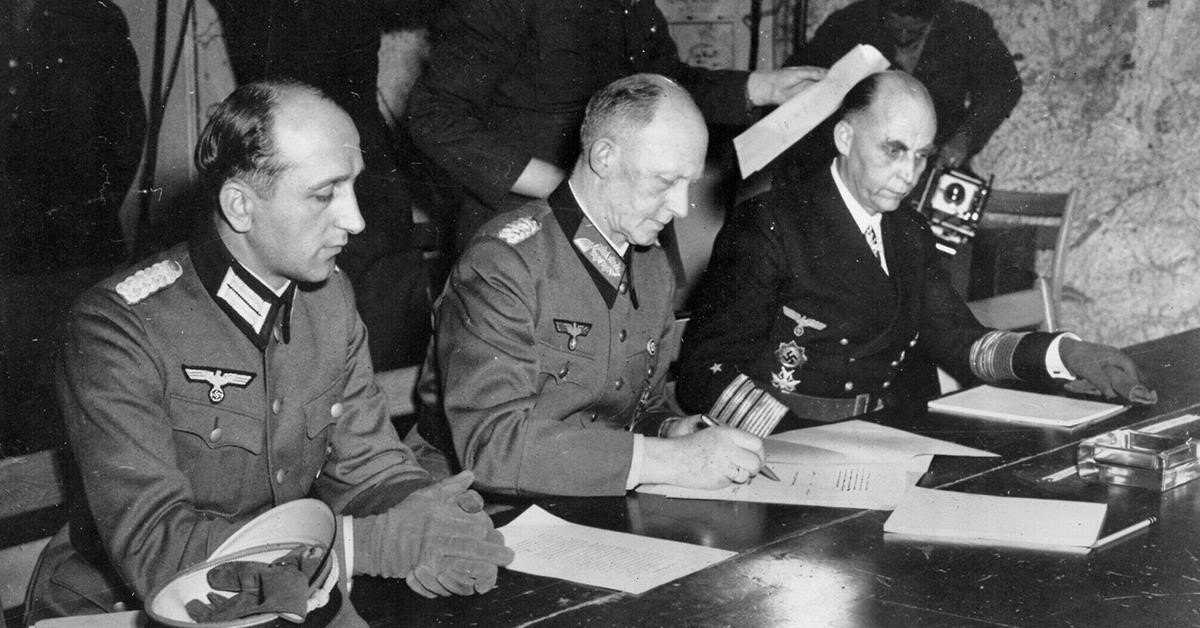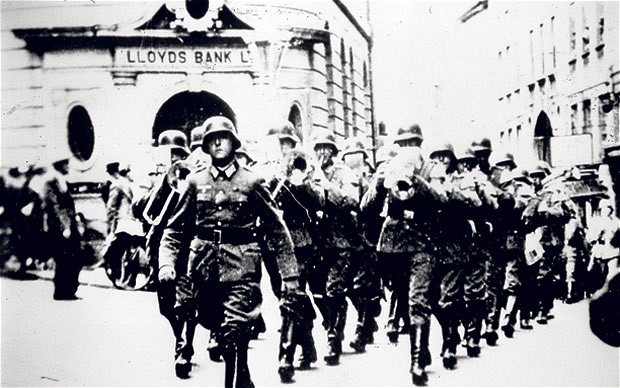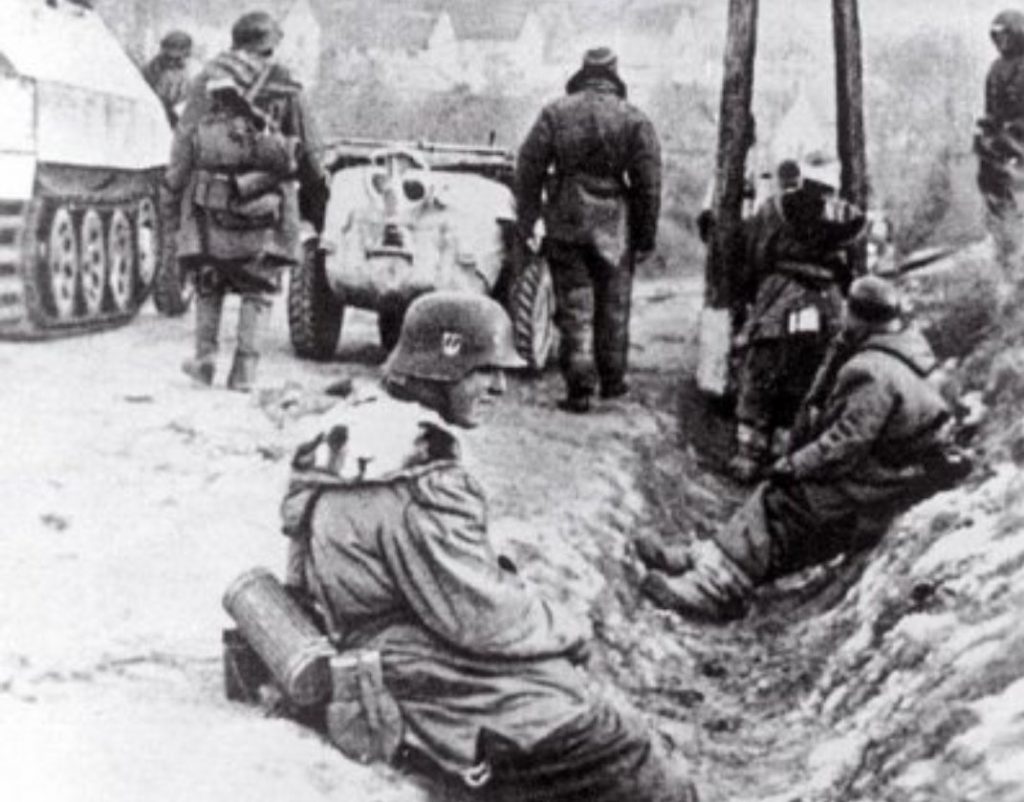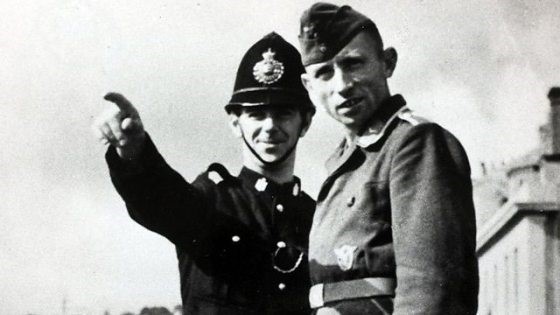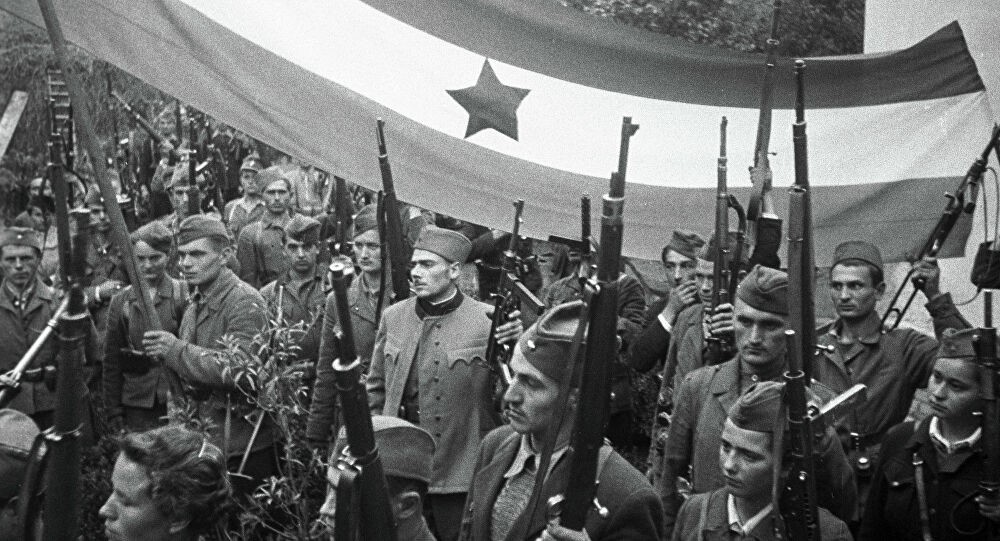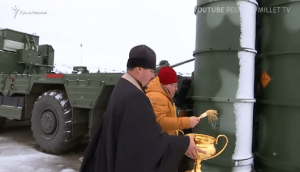The war against fascism ended in Europe at 2:41 am on May 7th, 1945, as everyone knows, with the official surrender of German Armed Forces High Command Chief-of-Staff, General Alfred Jodl on behalf of the combined Nazi forces in Europe. For this reason, spontaneous celebration erupted throughout Europe as soon as news broke with many regarding May 7th as the official VE (Victory in Europe) day. This… Is slightly inaccurate. For quite a few reasons! The story of the definitive end to Nazi presence in Europe is long and conflicted.
“All forces under German control to cease active operations at 2301 hours Central European Time on May 8th, 1945.” If you read this passage closely, you might notice that May 8th is not the same as May 7th. This was an extra period of time to allow news to disseminate through the remaining Nazi forces and indeed to the allies, so there were no major incidents of fighting beyond the surrender date to cause some upset in international law. Regular stuff, really.
Channel Islands
Sure enough, news filtered slowly to some parts of the now-defunct Reich. The German positions on the British Channel Islands, the only British territory to be outright occupied by the Nazis, learned of the German surrender from a radio speech from Winston Churchill announcing it on May 8th but would not formally surrender themselves until they’d heard it from Germans. It wasn’t until May 9th that the formal surrender in the Channel Islands occurred. So that already extends the official ‘end’ date of the Nazi war machine by a tad! Still, the former USSR already celebrates VE day as May 9th, so it’s not really stretching beyond its time yet. Well… We’ll see.
When I said that German Armed Forces High Command surrendered, I should probably point out that by this stage, half the German leadership was already dead or missing. Hitler had blown his brains out and been replaced by Goebbels, who promptly blew his own brains out days later. Given both of these men had adamantly refused surrender to the bitter, bloody end, the third man down the line in the span of a week had questionable authority, to say the least. Not least because Hitler hadn’t even bothered to name a proper successor, having instead made Goebbels Chancellor and one Karl Dönitz the President. It was hard to tell in all the chaos, whether Dönitz, who delegated his authority to Jodl to surrender in the first place, could be considered trustworthy. After all, Himmler and Goering had both attempted to initiate surrender behind Hitler’s back in the previous few weeks and been branded traitors! No more Treaty of Versailles and so forth! These few remaining hardliners (or perhaps just those who knew damn well their lives lay at the end of a rope once the surrender came through) chose to fight on for just a little longer.
Battle of Slivice
The Battle of Slivice was an interesting outcome of all this. In what was later to become Czechoslovakia, a large group of remaining Germans were commanded by Field Marshal Ferdinand Schörner to not lay down arms and instead continue the fight against the overwhelming Soviet forces. Was this in hopes of victory? …No. This was simply to break through Soviet lines and surrender to the Americans, in the probably correct assumption that the Americans would treat them a lot more kindly than the Soviets would. When some troops made it close to American lines and attempted to surrender, they were… Sent back. The Americans knew damn well what they were trying to do and perhaps vindictively were having none of it. Lacking options, the Germans dug in and prepared for a fight.
A united Soviet and American bombardment rained down on the German forces for several days before finally, their defences crumbled, and SS-Gruppenführer Carl Friedrich von Pückler-Burghauss signed his official surrender at 3 am on May 12th, 1945. Shortly after, he and several of his staff shot themselves, and many of the other high-ranking SS officers fled into the woods, only to be cut down by Czech partisan units operating there. Over 6000 soldiers were taken prisoner in what was the last large-scale battle of the European theatre, from then on we can hardly start counting every terrified SS officer hiding in an apartment somewhere who gets unceremoniously destroyed by a Katyusha rocket. So that’s the end, right?
Channel Islands Again
Wrong! Do you know how I mentioned earlier that the Germans in the Channel Islands had surrendered? Well, that was a partial truth. Note I said ‘islands’ not island. That plural is important. The islands of Guernsey, Jersey and Sark were fairly large and had thousands of civilians between them, so these were the ones that needed liberation. German communications were terrible by this stage, so even they couldn’t speak for one another, leaving the black sheep of the islands, Alderney, untouched. British ships wouldn’t even approach the island, being unsure if any civilians were present there, or if the Germans were aware of the surrender yet.
As it happened, while Jersey had a whopping 41,101 civilians still present, Guernsey had 24,429 and Sark had a modest 470, Alderney had a piddling 18 civilians. It may have been little, but it was still an occupation. There were 3,202 German soldiers still on Alderney, so just storming in wasn’t exactly advisable, it was still enough for a fight! Communications were eventually established through the surrendered Germans on the other islands, and Alderney’s occupational forces officially surrendered on May 16th, over a week after the war in Europe had apparently come to an end!
Battle of Poljana
No, no, it’s never that damn simple, is it? You see, the Nazis weren’t the only group fighting in Europe. Yugoslavia had been run by a puppet Croatian government while the Nazis were in town, and the Yugoslav partisans under Josip Broz Tito were a major force to be reckoned with. Much like with the Soviets, fascists left trapped in Yugoslav partisan territory desperately wanted to surrender to someone else, knowing full-well that this non-official government would have a much higher chance of roundly executing them than the more placid Brits and Americans. This led to another attempted break-out towards British territory in nearby Austria, though unlike with the entrapped Nazis in Czech territory earlier, they had quite a march ahead of them.
Over 30,000 mixed Croat fascists, Chetniks and even remnants of the German Army Group E, who had refused their order to surrender and fled without their commanders, began the arduous journey to try and breakthrough to Austrian lines. At 9 am on May 14th, they reached the British positions and attempted to negotiate a surrender. The Brits wanted none of it, and hostilities ensued, known as the Battle of Poljana, with heavy shelling from both sides occurring throughout the night until the morning of May 15th. The British officers were adamant; they would not accept the surrender, and the Germans would have to face the Yugoslavs. Finally, accepting their fate, white flags were raised at 4 pm on May 15th. There was no formal surrender due to the lack of senior officers, this merely being a rag-tag band of terrified fascists, but this could be the final end to actively fighting German forces in Europe. A further battle with just the Croat forces wasn’t to end until May 25th, long after the surrender of everyone else, but it’s got little to do with any remaining Germans. So, finally, is this the last remnants of Nazi militarism?
Operation Haudegen
Yes… In Europe. Here is where we reach the grand finale. The final Nazi surrender. When in May was this one? Or did these last few desperate thugs claw their way through until June somehow? …July? No. All the way until September 4th, a whole two days after the surrender of the Japanese and the official end of WW2 as a whole! So who were these last few Nazi loyalists?
…They were a weather team in Svalbard. Yeah. There was no grand last stand against a hail of steel from all sides like the end of 300. It was a couple of dorks left stuck in the arctic circle checking weather reports. To be fair to them, it had been an important task when they started, setting out all the way back on August 5th 1944, so that they could provide weather information to the Luftwaffe and make sure planes weren’t gonna go down over Norway. Aside from the science team, the necessity of fighting off polar bears and the like meant that a good few soldiers were in their midst too, making it an official armed, occupational expedition to the middle of fucking nowhere but all the same.
They received news of Germany’s surrender on May 7th and immediately began to burn all of their work, but Then what? Radio silence left them without any news for weeks on end. They were stranded, there was no news to speak of! All they had was a rowing boat, which I wouldn’t exactly trust to get me out of the arctic. What they did have, however, was a two-year supply of food to keep them from starving. So They hunkered down and waited. And waited. Perhaps hoping that if they waited long enough, the miraculously surviving Reich would start broadcasting again and come to bring them home to a victorious Germany?
Eventually, reason prevailed, and they began broadcasting on Allied radio-waves. It took some time for the allies even to understand what the hell was happening, but eventually, a small seal-hunting ship was sent out to investigate. Arriving on September 4th, 1945, the leader of the exhibition Wilhelm Dege offered his Luger to the bemused Norwegian commander as a symbol of surrender.
With this final act, two days after the war as a whole had ended, the last remaining, tiniest shred of Nazi military influence had ended Unless you count all the Nazi influence in NASA and NATO, but hey, that’s a whole other topic for an entire other day.
